Enhancement of Peripheral Nerve Regrowth by the Purine Nucleoside Analog and Cell Cycle Inhibitor, Roscovitine
- PMID: 27799897
- PMCID: PMC5066473
- DOI: 10.3389/fncel.2016.00238
Enhancement of Peripheral Nerve Regrowth by the Purine Nucleoside Analog and Cell Cycle Inhibitor, Roscovitine
Abstract
Peripheral nerve regeneration is a slow process that can be associated with limited outcomes and thus a search for novel and effective therapy for peripheral nerve injury and disease is crucial. Here, we found that roscovitine, a synthetic purine nucleoside analog, enhances neurite outgrowth in neuronal-like PC12 cells. Furthermore, ex vivo analysis of pre-injured adult rat dorsal root ganglion (DRG) neurons showed that roscovitine enhances neurite regrowth in these cells. Likewise, in vivo transected sciatic nerves in rats locally perfused with roscovitine had augmented repopulation of new myelinated axons beyond the transection zone. By mass spectrometry, we found that roscovitine interacts with tubulin and actin. It interacts directly with tubulin and causes a dose-dependent induction of tubulin polymerization as well as enhances Guanosine-5'-triphosphate (GTP)-dependent tubulin polymerization. Conversely, roscovitine interacts indirectly with actin and counteracts the inhibitory effect of cyclin-dependent kinases 5 (Cdk5) on Actin-Related Proteins 2/3 (Arp2/3)-dependent actin polymerization, and thus, causes actin polymerization. Moreover, in the presence of neurotrophic factors such as nerve growth factor (NGF), roscovitine-enhanced neurite outgrowth is mediated by increased activation of the extracellular signal-regulated kinases 1/2 (ERK1/2) and p38 mitogen-activated protein kinase (MAPK) pathways. Since microtubule and F-actin dynamics are critical for axonal regrowth, the ability of roscovitine to activate the ERK1/2 and p38 MAPK pathways and support polymerization of tubulin and actin indicate a major role for this purine nucleoside analog in the promotion of axonal regeneration. Together, our findings demonstrate a therapeutic potential for the purine nucleoside analog, roscovitine, in peripheral nerve injury.
Keywords: axon; cytoskeleton; injury; peripheral nerve; regeneration.
Figures
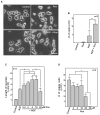
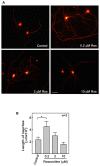
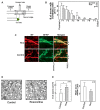

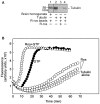
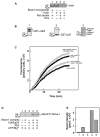
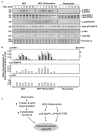
Similar articles
-
Cdk5 Phosphorylation of STAT3 in Dorsal Root Ganglion Neurons Is Involved in Promoting Axonal Regeneration After Peripheral Nerve Injury.Int Neurourol J. 2020 May;24(Suppl 1):S19-27. doi: 10.5213/inj.2040158.080. Epub 2020 May 31. Int Neurourol J. 2020. PMID: 32482054 Free PMC article.
-
Sensory neurons selectively upregulate synthesis and transport of the beta III-tubulin protein during axonal regeneration.J Neurosci. 1995 Feb;15(2):1545-55. doi: 10.1523/JNEUROSCI.15-02-01545.1995. J Neurosci. 1995. PMID: 7869117 Free PMC article.
-
Facilitating effects of Buyang Huanwu decoction on axonal regeneration after peripheral nerve transection.J Ethnopharmacol. 2018 Mar 1;213:56-64. doi: 10.1016/j.jep.2017.10.036. Epub 2017 Nov 2. J Ethnopharmacol. 2018. PMID: 29102766
-
Apoptosis of central and peripheral neurons can be prevented with cyclin-dependent kinase/mitogen-activated protein kinase inhibitors.J Neurochem. 1998 Apr;70(4):1401-10. doi: 10.1046/j.1471-4159.1998.70041401.x. J Neurochem. 1998. PMID: 9523556
-
Trophic effects of purines in neurons and glial cells.Prog Neurobiol. 1999 Dec;59(6):663-90. doi: 10.1016/s0301-0082(99)00017-9. Prog Neurobiol. 1999. PMID: 10845757 Review.
Cited by
-
A Conditioning Sciatic Nerve Lesion Triggers a Pro-regenerative State in Primary Sensory Neurons Also of Dorsal Root Ganglia Non-associated With the Damaged Nerve.Front Cell Neurosci. 2019 Feb 4;13:11. doi: 10.3389/fncel.2019.00011. eCollection 2019. Front Cell Neurosci. 2019. PMID: 30778286 Free PMC article.
-
Potential Mechanisms Connecting Purine Metabolism and Cancer Therapy.Front Immunol. 2018 Jul 30;9:1697. doi: 10.3389/fimmu.2018.01697. eCollection 2018. Front Immunol. 2018. PMID: 30105018 Free PMC article. Review.
References
LinkOut - more resources
Full Text Sources
Other Literature Sources
Miscellaneous

